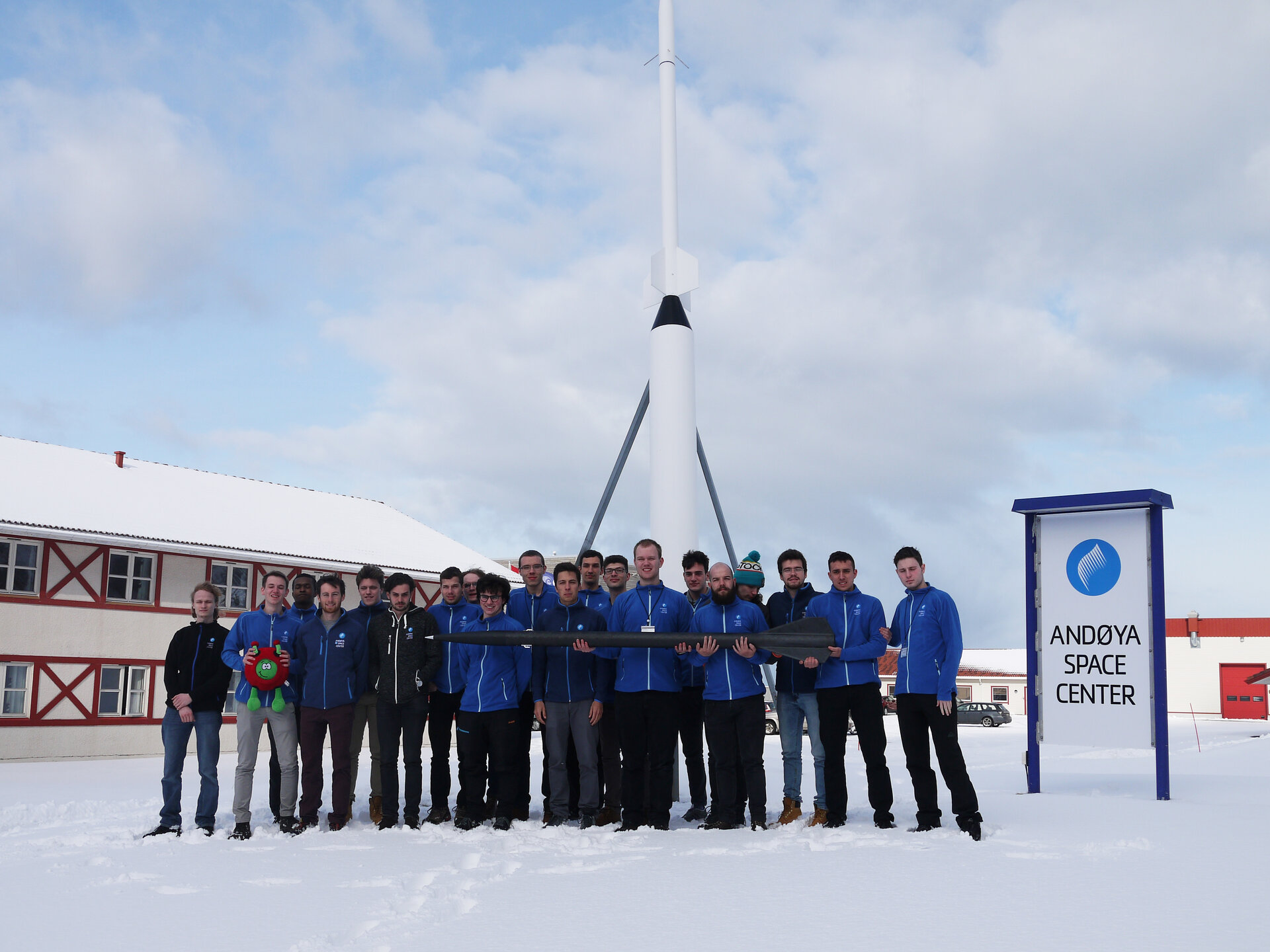About Fly a Rocket!
The Fly a Rocket! programme offers the chance to university students early in their studies to learn about rocketry and to have the chance to launch their very own rocket from Andøya Space.
This programme is realised in partnership with Andøya Space Education and the Norwegian Space Agency (Norsk Romsenter).
The Fly a Rocket! Programme is designed with early bachelor students in mind and aims to introduce to the space industry, ESA, the Norwegian efforts in space and, of course, rocketry! Read more here about the programme objectives.
Unlike other hands-on programmes the Fly a Rocket! Programme is aimed at individual applicants, rather than team applications. More information about the application process can be found here.
While an understanding of some higher-level mathematics is required, candidates don’t need an aerospace background, however they should show and demonstrate a strong interest in the space industry, space science or technology.
About the schedule
Successful applicants will first participate in an online course. To allow students to fit this into their university schedules, two courses with identical content are offered. A detailed schedule can be found here.
In the online course, students will learn among others about rocket engines, flight dynamics, numerical calculations and details about the rocket launched during the hands-on launch campaign. Participants will be given access to an online portal where they can access material for self-study. At the end of the online course, participating students must submit their solutions to an assignment. Those will then be used together with the information provided during the initial application process to select the participants for the launch campaign.
Following the online course, the best students are invited to participate in a hands-on launch campaign at the Andøya Space launch site in Northern Norway, where they will, as part of a team, build, verify, and launch their own student rocket! After the launch, the campaign participants will work together to analyse the results of the flight and to produce a final report of their findings.
About the rocket
The student rocket is a Mongoose 98 rocket—about 2.7 meters long and with a body mostly made of carbon fiber. Not counting the motor itself, it can be divided into three parts: the booster tube with fins, the payload tubes (which includes the aviation tube and the nose cone) and the avionics plate where all the electronics is mounted.
The Mongoose 98 is a commercially available rocket, but the version used for the student rocket course is customized to fit the needs of the students. A Fusion 360 model can be explored interactively here.
The most import parameters and dimensions of the rocket are:
- Total length: 2708 mm
- Total width of body: 102.8 mm
- Total dry weight (excluding motor casing, but including 1.3 kg payload): 5.454 kg
- Motor: Pro98 15227N2501-P from Cesaroni Technology Inc
- Typical flight apogee: 7-8 km
A basic sensor kit is always flown on the rockets:
- two-axis accelerometer
- temperature sensors
- pressure sensor
- light sensor
- two-axis magnetometer
- GPS
- IMU
- Temperature array, with the sensors mounted along the nosecone to measure the temperature gradient
About the partners
Andøya Space Education provides different activities, seminars and conferences related to space technology, space physics, atmosphere, astrophysics, climate and environment. Within the scope of high technology and breath-taking northern scenery, the combination of theory and practical work provides a unique learning experience.
The Norwegian Space Agency (Norsk Romsenter) is a government agency under the Ministry of Trade, Industry and Fisheries. The NOSA was established in 1987, when Norway became a member of the European Space Agency (ESA).
The Norwegian Space Agency is responsible for organizing Norwegian space activities, particularly with respect to ESA and the EU, and for coordinating national space activities.


